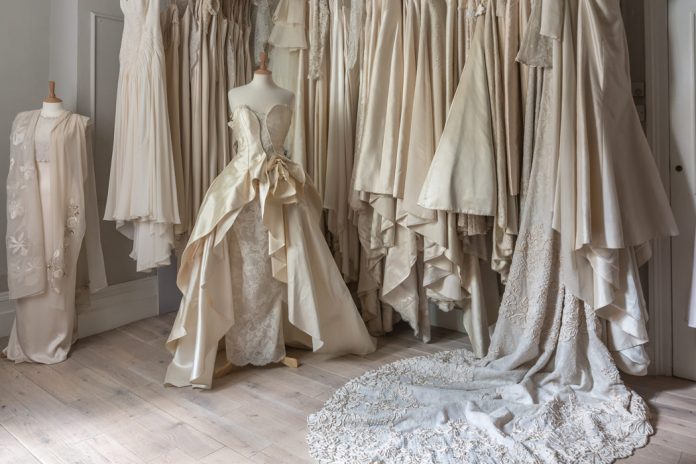About 17 million members of Generation Z are now adults and starting to
enter the U.S. workforce, and employers haven’t seen a generation like
this since the Great Depression. They came of age during recessions,
financial crises, war, terror threats, school shootings and under the
constant glare of technology and social media. The broad result is a
scarred generation, cautious and hardened by economic and social
turbulence.
Gen Z totals about 67 million, including those born
roughly beginning in 1997 up until a few years ago. Its members are more
eager to get rich than the past three generations but are less
interested in owning their own businesses, according to surveys. As
teenagers many postponed risk-taking rites of passage such as sex,
drinking and getting driver’s licenses. Now they are eschewing student
debt, having seen prior generations drive it to records, and trying to
forge careers that can withstand economic crisis.
Early signs suggest Gen Z workers are more competitive
and pragmatic, but also more anxious and reserved, than millennials, the
generation of 72 million born from 1981 to 1996, according to
executives, managers, generational consultants and multidecade studies
of young people. Gen Zers are also the most racially diverse generation
in American history: Almost half are a race other than non-Hispanic
white.
With the generation of baby boomers retiring and
unemployment at historic lows, Gen Z is filling immense gaps in the
workforce. Employers, plagued by worker shortages, are trying to adapt. LinkedIn Corp. and Intuit Inc. have eased requirements
that certain hires hold bachelor’s degrees to reach young adults who
couldn’t afford college. At campus recruiting events, EY is raffling off
computer tablets because competition for top talent is intense.
Companies are reworking training so it replicates YouTube-style videos that appeal to Gen Z workers reared on smartphones. “They learn new information much more quickly than
their predecessors,” says Ray Blanchette, CEO of Ruby Tuesday Inc.,
which introduced phone videos to teach young workers to grill burgers
and slow-cook ribs. Growing up immersed in mobile technology also means
“it’s not natural or comfortable for them necessarily to interact
one-on-one,” he says.
Demographers see parallels with the Silent Generation, a
parsimonious batch born between 1928 and 1945 that carried the economic
scars of the Great Depression and World War II into adulthood while
reaping the rewards of a booming postwar economy in the 1950s and 1960s.
Gen Z is setting out in the workplace at one of the most opportune
times in decades, with an unemployment rate of 4%.
“They’re more like children of the 1930s, if children
of the 1930s had learned to think, learn and communicate while attached
to hand-held supercomputers,” says Bruce Tulgan, a management consultant
at RainmakerThinking in Whitneyville, Conn.
At Ruby Tuesday, Mr. Blanchette can’t find enough young
adult workers to wait tables and wash dishes because Uber and Lyft
siphoned them off with worker-driven scheduling. “It’s a swipe one way
on their phone and they’re working, and a swipe the other way and
they’re not. It’s tough to compete against that,” he says.
Those who do pick Ruby Tuesday want assurances they
will get health insurance and other benefits. “They’re not even going to
access these benefits that we offer, because they’re staying on their
parents plan, but they want to know it’s there,” Mr. Blanchette says.
“They’re thinking, ‘What if I graduate college and I don’t find a job,
and I need to stay here?’ ”
Gen Z’s attitudes about work reflect a craving for
financial security. The share of college freshmen nationwide who
prioritize becoming well off rose to around 82% when Gen Z began
entering college a few years ago, according to the University of
California, Los Angeles. That is the highest level since the school
began surveying the subject in 1966. The lowest point was 36% in 1970. The oldest Gen Zers also are more interested in making
work a central part of their lives and are more willing to work overtime
than most millennials, according to the University of Michigan’s annual
survey of teens.
“They have a stronger work ethic,” says Jean Twenge, a
San Diego State University psychology professor whose book “iGen”
analyzes the group. “They’re really scared that they’re not going to get
the good job that everybody says they need to make it.”
Just 30% of 12th-graders wanted to be self-employed in
2016, according to the Michigan survey, which has measured teen
attitudes and behaviors since the mid-1970s. That is a lower rate than
baby boomers, Gen X, the group born between 1965 and 1980, and most
millennials when they were high-school seniors. Gen Z’s name follows Gen
X and Gen Y, an early moniker for the millennial generation.
College Works Painting, which hires about 1,600 college
students a year to run small painting businesses across the country, is
having difficulty hiring branch managers because few applicants have
entrepreneurial skills, says Matt Stewart, the Irvine, Calif., company’s
co-founder.
“Your risk is failure, and I do think people are more afraid of failure than they used to be,” he says. A few years ago Mr. Stewart noticed that Gen Z hires
behaved differently than their predecessors. When the company launched a
project to support branch managers, millennials excitedly teamed up and
worked together. Gen Z workers wanted individual recognition and extra
pay. The company introduced bonuses of up to $3,000 to encourage them to
participate.
Michael Solohubovskyy was 12 when his family left
Ukraine in 2012 for Snohomish County, Wash. His father, a former taxi
driver, instilled in him that hard work was key to success. Reading
about billionaires Bill Gates and Jeff Bezos reinforced the message. After graduating from high school, Mr. Solohubovskyy,
now 18, took a job at Boeing as an electrical technician. The company
pays for his classes to earn an airframe and powerplant license. Once a
month he also works at a Tommy Hilfiger store so he can get a 50%
discount on clothing. “I never want to fail,” says Mr. Solohubovskyy. “When
you read the stories about famous people, they have to sacrifice
something to achieve. I’ll sacrifice my sleep.”
After seeing their millennial predecessors drown in
student debt, Gen Z is trying to avoid that fate. The share of freshmen
who used loans to pay for college peaked in 2009 at 53% and has declined
almost every year since, falling to 47% in 2016, according to the UCLA
survey.
Denise Villa, chief executive of the Center for
Generational Kinetics in Austin, says focus groups show some Gen Z
members are choosing less-expensive, lower-status colleges to lessen
debt loads. Federal Reserve Bank of New York data show that nationwide,
overall student loan balances have grown at an average annual rate of 6%
in the past four years, down sharply from a 16% annual growth rate in
the previous decade.
Lana Demelo, a 20-year-old in San Jose, Calif., saw her
older sister take on debt when she became the first person in their
family to attend college. “I just watched her go through all those
pressures and I felt like me personally, I didn’t want to go through
them,” says Ms. Demelo. She enrolled in Year Up, a work training program
that places low-income high-school graduates in internships, got hired
as a project coordinator at LinkedIn and attends De Anza College in
Cupertino part-time....
That is one reason EY three years ago launched a
program originally called “are u ok?”—now called “We Care”—a companywide
mental health program that includes a hotline for struggling workers. Mr. Stewart, of College Works Painting, says he wasn’t
aware of any depressed employees 15 years ago but now deals frequently
with workers battling mental-health issues. He says he has two workers
with bipolar disorder that the company wants to promote but can’t
“because they’ll disappear for a week at a time on the down cycle.”
Smartphones may be partly to blame. Much of Gen Z’s
socializing takes place via text messages and social media platforms—a
shift that has eroded natural interactions and allowed bullying to play
out in front of wider audiences. In the small town of Conneaut Lake, Penn., Corrina Del
Greco and her friends joined Snapchat and Instagram in middle school.
Ms. Del Greco, 19, checked them every hour and fended off requests for
prurient photos from boys. She shut down her social media accounts after
deciding they “had a little too much power over my self-esteem,” she
said. That has helped her focus on studying at Embry-Riddle
Aeronautical University in Daytona Beach, Fla., to become a software
engineer, a career she sees as recession-proof. When the last downturn
hit, she remembers cutting back on gas and eating out because her
parents’ music-lesson business softened. “I learned a lot about the value of money,” she says. “I’ve always wanted to have a very secure lifestyle, secure income.” She says the negative experience with social media made
her want a professional LinkedIn page, and she took a seminar at
college to learn how to do that.
Getting employees comfortable with face-to-face
interactions takes work, Ms. Stough says. “We do have to coach our
interns, ‘If you’re sitting five seats away from the client and they’re
around the corner, go talk to them.’ ” Intense competition for Silicon Valley talent prompted
Intuit to change its recruiting practices. The Mountain View, Calif.,
financial software maker began responding to all 4,500 young adults who
apply for internships and first jobs annually regardless of whether they
received offers. Not responding could hurt the company’s brand because
tech-savvy young adults have the power to influence peers, says Nick
Mailey, Intuit’s vice president of talent acquisition.
Intuit moved job postings to Slack, a messaging
platform, so workers who pay less attention to email don’t overlook
opportunities inside the company. “They will gain a skill and move onto
the next thing,” Mr. Mailey says. “You’re seeing more attrition.”
LinkedIn, which used to recruit from about a dozen
colleges, broadened its efforts to include hundreds of schools and
computer coding boot camps to capture a diverse applicant pool that
mirrors the changing population. “We don’t care where they went to school or frankly if
they went to school,” says Brendan Browne, the company’s vice president
of global talent acquisition. “We’ll take talent and build them from
scratch.”
Mr. McKeon, the Ohio student, sees a silver lining
growing up during tumultuous times. He used money from his grandfather
and jobs at McDonald’s and a house painting company to build a stock
portfolio now worth about $5,000. He took school more seriously knowing
that “the world’s gotten a lot more competitive.”
“With any hardship that people endure in life, they
either get stronger or it paralyzes them,” Mr. McKeon says. “These
hardships have offered a great opportunity for us to get stronger.” (
Read more.)


































